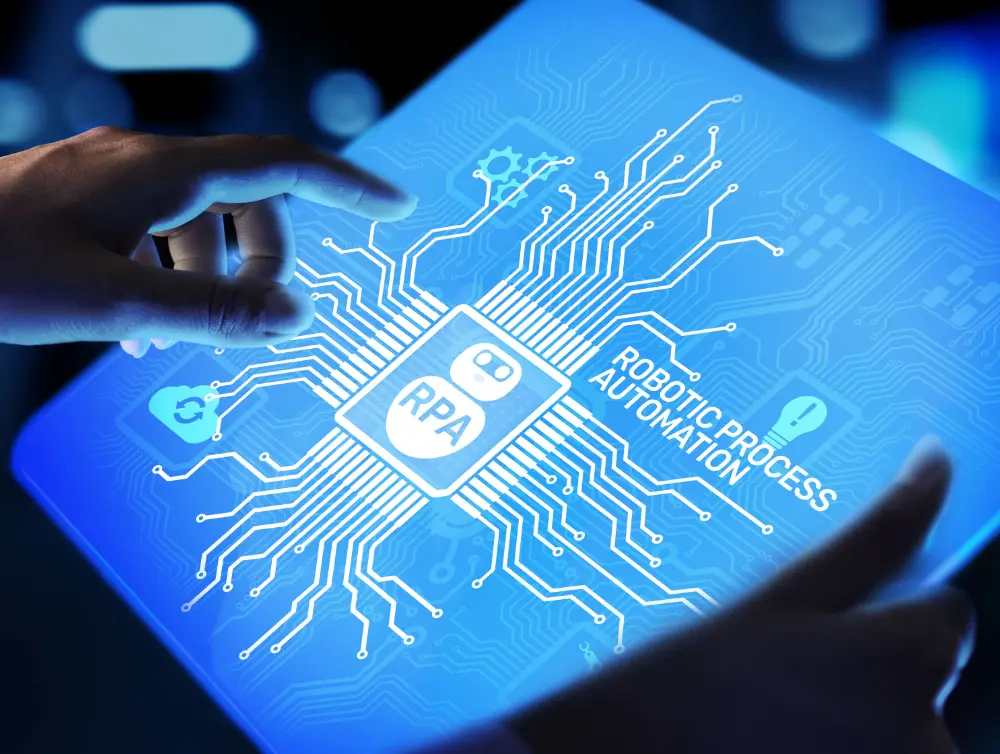Robotic Process Automation (RPA) and Intelligent Automation (IA) are two technologies that are transforming the way businesses

Robotic Process Automation (RPA) and Intelligent Automation (IA) are two technologies that are transforming the way businesses operate and deliver value to their customers. Both technologies aim to automate repetitive, rule-based tasks that are usually performed by humans, such as data entry, invoice processing, report generation, and more. However, RPA and IA are not the same thing. In fact, they have different capabilities, use cases, and benefits. In this blog post, we will explain the key differences between RPA and IA and help you decide which one is right for your business.
What is RPA?
RPA is a software technology that uses software robots or bots to mimic human actions on a computer. RPA bots can interact with applications, websites, databases, and other systems using the same user interface as humans. For example, an RPA bot can open an email, download an attachment, log into a website, fill out a form, copy and paste data, and send a confirmation email. RPA bots can perform these tasks faster, more accurately, and more consistently than humans.
RPA is best suited for automating tasks that are:
– Repetitive: The task is performed frequently and in the same way every time.
– Rule-based: The task follows a clear set of rules or logic that can be programmed into the bot.
– Structured: The task involves structured data that can be easily read and processed by the bot.
– Low-complexity: The task does not require human judgment, creativity, or decision-making.
Some of the benefits of RPA are:
– Improved efficiency: RPA bots can work 24/7 without breaks or errors, increasing productivity and reducing operational costs.
– Enhanced quality: RPA bots can eliminate human errors and ensure compliance with standards and regulations.
– Increased scalability: RPA bots can be easily deployed and managed across multiple processes and systems.
– Better customer experience: RPA bots can reduce waiting times, improve accuracy, and free up human workers to focus on more value-added tasks.
What is IA?
IA is a technology that combines RPA with artificial intelligence (AI) technologies such as machine learning (ML), natural language processing (NLP), optical character recognition (OCR), computer vision, and more. IA bots can not only mimic human actions but also understand the meaning and context of the data they process. For example, an IA bot can read an invoice in any format or language, extract relevant information, validate it against other sources, flag any anomalies, and update the accounting system. IA bots can perform these tasks smarter, more flexibly, and more adaptively than RPA bots.
IA is best suited for automating tasks that are:
– Complex: The task involves multiple steps, systems, or data sources that require coordination and integration.
– Unstructured: The task involves unstructured data such as images, documents, audio, video, or natural language that require interpretation and analysis.
– Dynamic: The task changes according to the situation or environment and requires human-like reasoning and decision-making.
– High-value: The task has a significant impact on the business outcomes or customer satisfaction.
Some of the benefits of IA are:
– Improved intelligence: IA bots can leverage AI technologies to analyze data, generate insights, make predictions, and provide recommendations.
– Enhanced flexibility: IA bots can handle different types of data formats, languages, and scenarios without requiring predefined rules or templates.
– Increased adaptability: IA bots can learn from feedback and data to improve their performance and accuracy over time.
– Better innovation: IA bots can enable new capabilities and opportunities for business growth and differentiation.
RPA vs IA: Which one is right for you?
The answer depends on your business needs and goals. RPA and IA are not mutually exclusive technologies. In fact, they are complementary and can be used together to create end-to-end automation solutions. For example, you can use RPA to automate simple tasks such as data entry or extraction while using IA to automate complex tasks such as data validation or classification.
The key is to identify the processes that are suitable for automation based on their characteristics and potential benefits. You can use a process discovery tool to analyze your current workflows and identify automation opportunities. You can also consult with an automation expert to help you design and implement the best automation solution for your business.
To learn more about how RPA and IA can help you transform your business operations and customer experience contact us today!